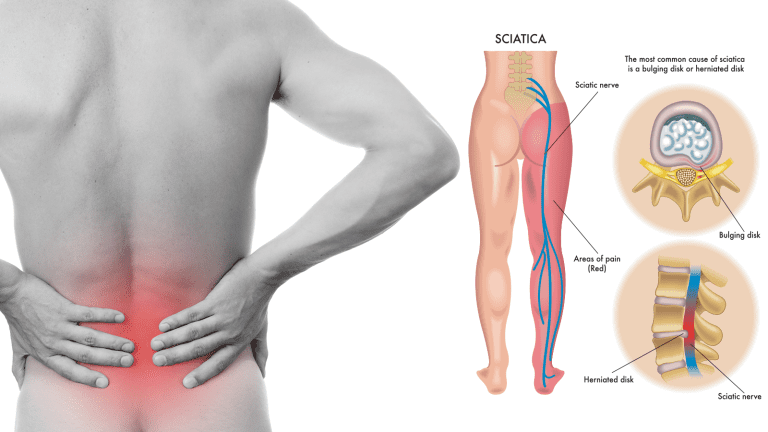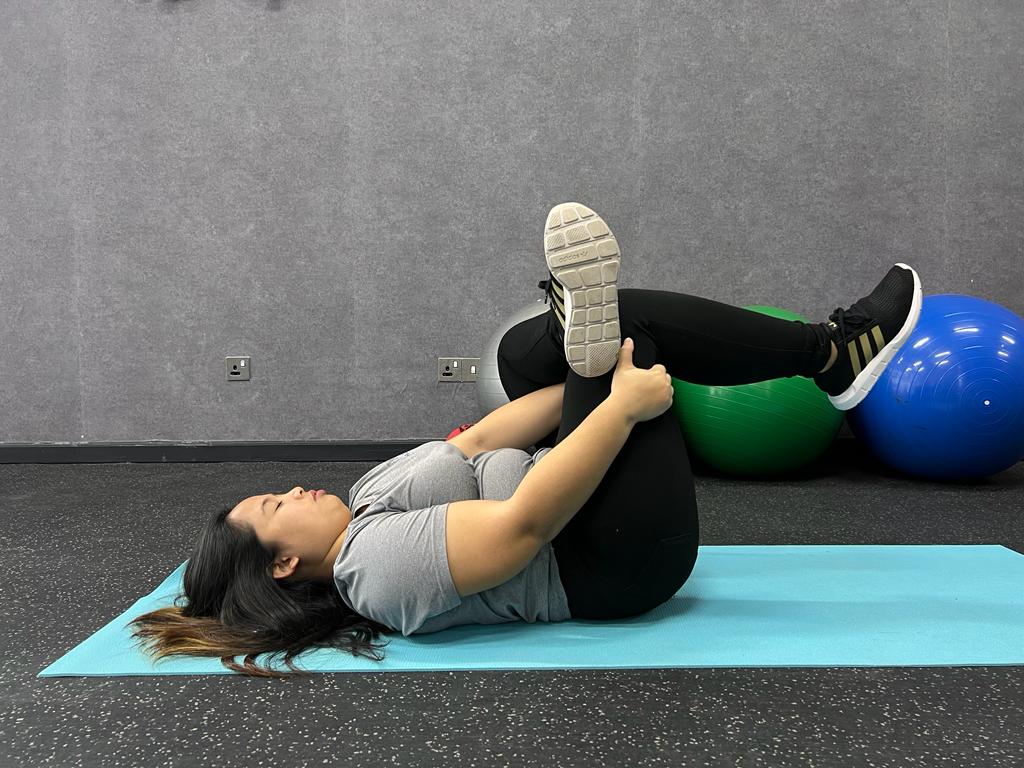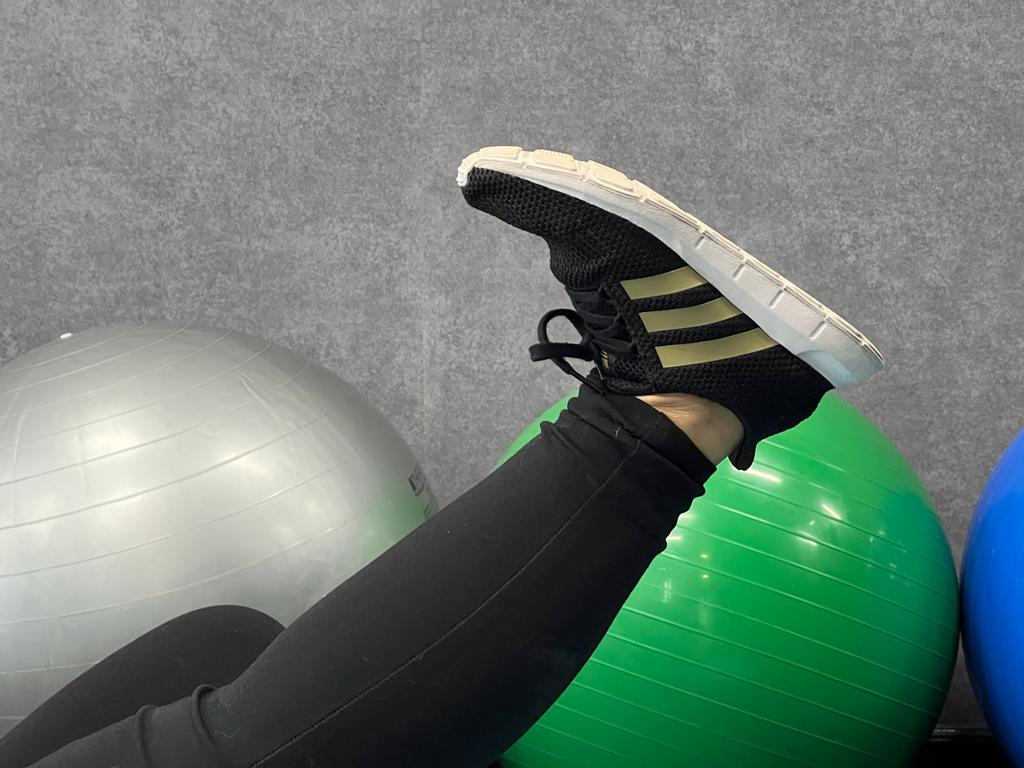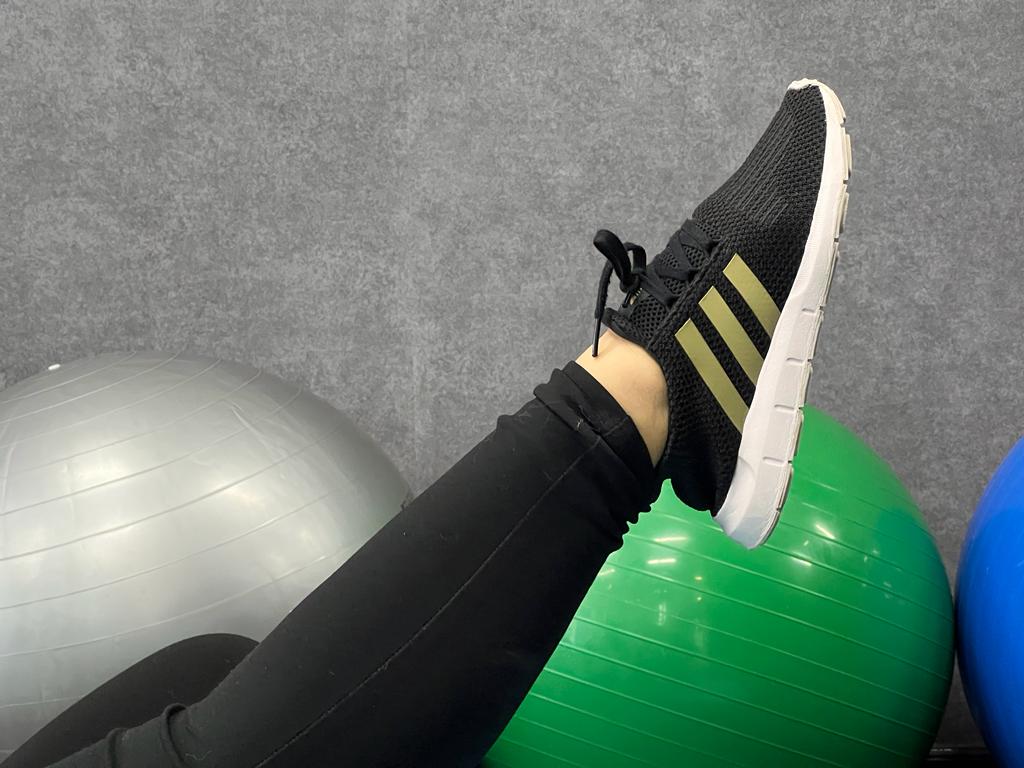
Health Blog | 3 MIN READ
Sciatica Pain
Dr. Katherine Valdez
For those who suffer from sciatica, the condition can be debilitating and painful. Sciatica is a condition that affects the sciatic nerve—the largest nerve in the body—causing pain, numbness, and tingling sensations in the lower back, buttocks, and legs. Unfortunately, sciatica is a common problem for many people; estimates suggest that up to 10 - 40% of people will experience sciatica at some point in their lives. In this blog post, we'll explore what exactly sciatica is, how it’s caused, the symptoms associated with it, as well as treatment options available.
Sciatica: What causes it?
A number of different conditions can cause sciatica, which is why it can be difficult to pinpoint the exact cause of the condition. However, some common causes of sciatica are worth mentioning.

One common cause of sciatica is a herniated disc. This occurs when the gel-like center of a spinal disc bulges out and puts pressure on the nerve root. This can happen due to age related wear and tear or from an injury.
Another common cause of sciatica is spinal stenosis. This is a narrowing of the spinal canal, which puts pressure on the nerves. Spinal stenosis is often caused by arthritis.
Other less common causes of sciatica include pregnancy, muscle spasms, tumors, and infection.
The symptoms of sciatica

Sciatica is a condition that can cause a great deal of pain and discomfort. The most common symptom of sciatica is a sharp, shooting pain that extends from the lower back down to the buttock and leg. This pain can be extremely debilitating, making it difficult to sit or stand for long periods. Other symptoms of sciatica include:
- Numbness or tingling in the affected leg. - Weakness in the affected leg. - Difficulty moving the affected leg or foot. - Pain that gets worse when you sit or stand for long periods. - Pain that radiates from the lower back down to the foot.
Pain Treatment for Sciatica
There are several different ways to treat sciatica, depending on the underlying cause. In many cases, simple self-care measures can be effective. These include over-the-counter pain relievers, heat or ice therapy, and gentle stretching exercises.
If these measures do not provide relief, your doctor may recommend more treatment options. These may include physical therapy
Sciatica can be a debilitating condition, but there are treatments available that can help relieve the pain and improve your quality of life. work with your doctor to find the best treatment plan for you.
Sciatica Exercises
Many different exercises can help to relieve the pain of sciatica. One simple exercise is to lie on your back with your knees bent and place a pillow under your head. Then, slowly raise your right leg until it is straight and hold for five seconds. Repeat this exercise with your left leg.
Other exercises that can help relieve sciatic pain include:
Hamstring Stretches:- Lie on your back with your knees bent and place a towel around your right ankle. Gently pull on the towel while keeping your knee straight until you feel a stretch in the back of your thigh. Hold for 30 seconds and repeat with the other leg.


Piriformis Stretches:- Lie on your back with both knees bent and place a pillow under your right hip. Cross your left ankle over your right knee and grasp your left thigh with both hands. Gently pull on your left thigh until you feel a stretch in your buttocks. Hold for 30 seconds and repeat with the other leg.


Risk Factors
Many risk factors can increase your likelihood of developing sciatica. These include:
- Being overweight or obese - Having a job that involves sitting for long periods - Having a sedentary lifestyle - Wearing high heels regularly - Pregnancy - Smoking
If you are overweight or obese, you are more likely to develop sciatica because there is additional pressure on your spine and nerves. If you have a sedentary lifestyle, you are also at an increased risk because you are not getting the necessary exercise to keep your spine and muscles healthy. Additionally, if you wear high heels regularly, this can also put extra pressure on your spine and lead to sciatica. Pregnancy is another common cause of sciatica, as the weight of the baby puts extra strain on the mother's back. Finally, smoking is also a risk factor as it decreases blood flow to the spine and can contribute to the degeneration of spinal discs.
Prevention of Sciatica Pain
There are several things you can do to prevent sciatica, or at least keep it from getting worse. First, maintain good posture and alignment. This means sitting up straight in chairs and not slouching. When you stand, keep your shoulders back and your head up. Second, stay active and avoid long periods of sitting or standing in one position. Regular exercise will help to maintain the flexibility of your spine and muscles. Third, be careful when lifting heavy objects. Lift with your legs, not your back, and avoid twisting or jerking motions. If you do these things, you will be less likely to develop sciatica or aggravate existing sciatica


